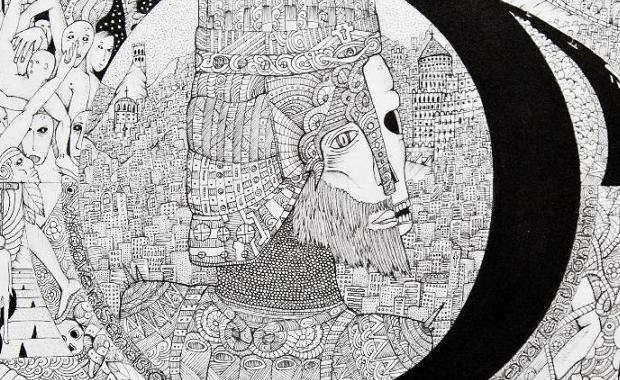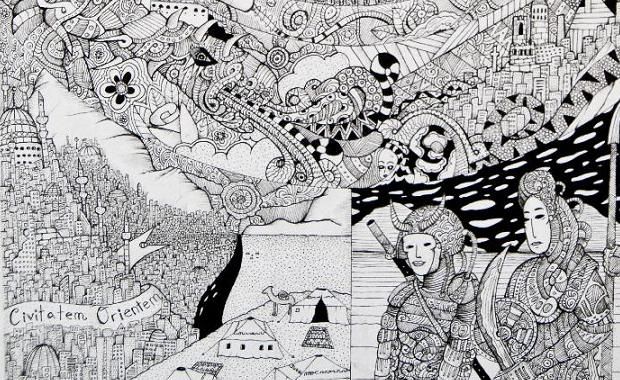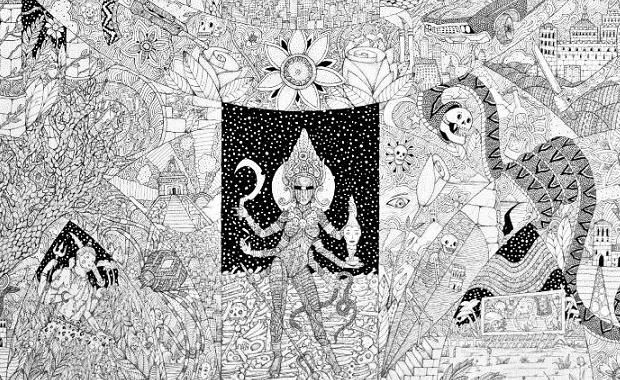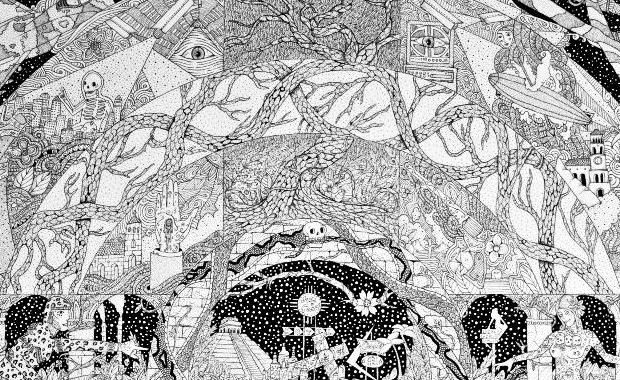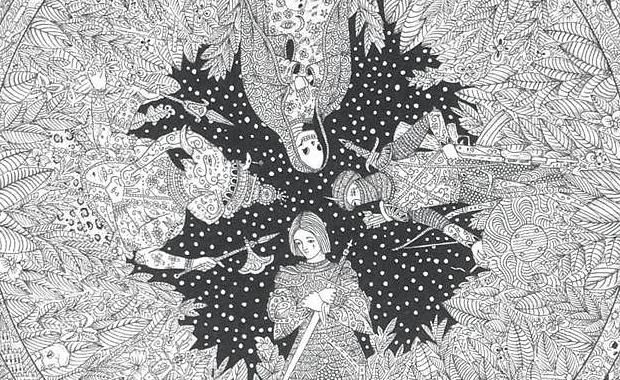On the occasion of the exhibition History Puts A Saint in Every Dream WHITECONCEPTS has released an interview with 22 years old Australian artist Finn Lafcadio O’Hanlon.
Since 2012 you are based in Berlin. How do you feel here, compared to other cities you lived in? What inspires you here most?
In some ways, it’s the lack of inspiration I have in Berlin that makes it a good place for me to work. I can get a perspective on, or a distance from, the other places that insinuate themselves into my work.
How did you arrive at your method of working and when did you began to draw like you do?
Drawing is only one aspect of what I do as an artist but its the most demanding. I would draw on my photographs. Then slowly I begun to strip back the photography, leaving only the drawing. I wanted to delve below the surface of what one usually ‘sees’ in an art work. It’s not underpinned by theory or conceptual posturing. I just wanted to explore a complicated topography of spaces, both imagined and remembered, and populate it with syncretic mythologies and pop culture.
In Australia you exhibited your photographs at the renowned Head On Photography Festival in Sydney. Do you still do photography, do you interwine these two spheres or do you only draw at the moment?
I draw, I photograph, I paint – I don’t have a single ‘practice’ but instead a variety of activities I like to work across. Photography for me is purely documentary, simple observation. Drawing is the opposite.
Your works are described as ‘psychogeographic maps’, like places to thought, they are not just a reflection on history. What do you want people to see in them and why do you think this is important now?
They’re not at all a reflection on history but rather a play on surreal possibilities that end up revealing some deeper truths about our preoccupations. You each see in them pieces of your self, I think, fragments of things you might have dreamed – or, if you’re inclined to the spiritual, believed in. I sometimes wish we still lived, in the west, in an age of pantheons of gods, demons, and monarchs who really believed in their divine rights to rule. I’m also glad I’m just a godless consumer. It’s complicated and highly textured: these drawings help me to navigate it.
What is it about history and your focus on certain events you find so interesting?
I like the way history in any one place has layers. It isn’t a horizontal, temporal narrative, but often, more simply, the detritus beneath your feet. In Berlin, beneath everything, I sense blood, just as one might in some parts of Africa. It’s visceral but also instructive. I never approach anywhere complacently.
Could you describe your mind-set, that you see time non-linear like the physicians?
As I said, my perceptions of place are layered. I see them at once how they are, how they were and how they might have been had my imagination exerted itself on them in some surreally deconstructive way. My images map these layers and as I’ve noted, present alternative possibilities.
Which books and persons inspire you?
My earliest exposure to art which had a lasting effect on me. I was going to a Peter Beard exhibition in New York with my father. I was intrigued by the writing, intricate drawings and collage on photographs. Later, I was inspired by the artists Dash Snow and Jonathan Meese.
The Victorian-era (19th century) science fiction and adventure novels have had a big influence on me. Writers like Jules Verne, Arthur Conan Doyle, and H.G. Wells.
Do you have any limitations while transforming your ideas on the paper?
Time. Each piece takes so damn long and demands a lot physically and in terms of focussed, minute attention. It’s exhausting.
Are your works meant to be a critique?
Not at all. They’re meant to draw you into a journey that might be either unsettling, entertaining or disorienting. Like an ancient map.



